True Paleo
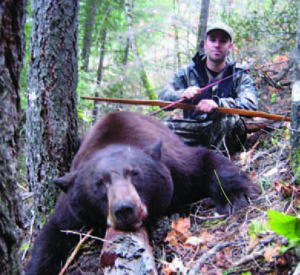
If we follow the tracks of our ancestors back far enough, deep down in the roots of our collective family arbor, we find that we are the descendants of mystical people. Highly aware individuals with the abilities to track across any surface. Master survivalists, with the skills to flourish lavishly in any landscape. Every need provided for through the bounty of the living earth. Herbalists and healers with supernatural intuitive powers. Silent hunter-gatherers, camouflaged and invisible in the pigment and aroma of the very soils and plants. This knowledge has not been lost, this knowledge is still being preserved and passed on…
Paleo life first appears in the Americas between 15,000-20,000 years ago. The specifics of the paleoindian migration are still the subject of ongoing research; however, most archeological evidence points to a migration over what is now the Bering Strait, down through modern-day Alaska, and spreading south and east to populate both the continents of North and South America. These people represent what many would describe as the epitome of fitness and the realization of the true potential of the human body. Paleoindians were the hunters of the megafauna: the giant beaver, steppe wisent, musk ox, mastodons, woolly mammoths, and ancient reindeer. Their diet in comparison to later indigenous peoples was high in these megafauna protein sources and supplemented by the foraging for wild edible plants, nuts, and seeds. Hunting and gathering bands usually had no chief and the men and women earned the respect of the group because of their abilities at hunting, healing, or providing some other needed service or physical ability to the band… Sounds suspiciously to me like the communities at many microgyms.
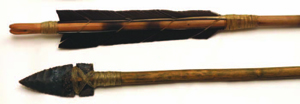
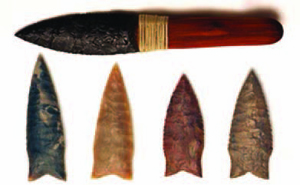
I have been fascinated by the paleo lifestyle for most of my existence. As a child, I used to run through the woods, attempting to fashion a spear out of just about any long pointed object I could find, and family camping trips usually ended with my parents on the verge of calling the search and rescue team to drag me out of the forest. As I got older, I decided to actively attack this passion, and throughout my teenage and college years, I became a voracious student of primitive wilderness survival skills. I attended countless outdoor schools, workshops, and poured over every written anthropological record I could find that described the tools, methods, and lifestyles of the first Americans. I’ve always been a hands-on learner, so it was never enough for me just to read about something either. I was “in it”, down on my hands and knees in the woods reading tracks, carving bow-drill kits to make fire by friction, brain-tanning animal hides, and banging rocks together in the hopes of making an arrowhead. While all the primitive skills interested me, it was always the hunting skills that peaked my interest above all else. After years of practice, honing my skills, and perfecting my tools, I was ready to put my skills in to action—to hunt as our ancestors did, tens-of-thousands of years ago:
I’m deep in the woods of Montana. The drive just to get to the edge of this property was over 5 hours from the nearest town, and by now I’ve hiked many miles from the last road. The land I’m told, is an original homesteader plot – 500,000 acres of untouched wilderness with several of its own elk herds. My spiritual preparation began days ago: fasting, praying, and partaking in the sweatlodge ceremony. I’m fully committed to hunting in the old ways.
It’s an eerily misty morning as the sun begins to rise. I can’t see more than 20 yards in to a meadow that I know is almost a quarter of a mile long. As I come up out of a mossy ravine, under the cover of the juniper boughs, I can hear the mystical sound of the bull elk’s bugle call. The primordial scream echoes off the hillsides causing my pulse to quicken and my palms to sweat. In my hands, I clutch on to nothing but sticks and rocks. A hand-carved wooden bow, made from an Osage Orange tree, and a small Dogwood arrow shaft tipped with a chipped flint point, and fletched with wild turkey feathers. I look out to the field, squinting, trying to focus on something that I still cannot see… when, all of a sudden… CRASH! The thunderous sound of antler-on-antler almost knocks me over backwards as two satellite bulls explode towards me engaged in a battle of dominance. Saplings fall to the wayside like cardboard models in a Godzilla movie and the ground shakes each time the bulls engage. I look down at the 2-inch stone point lashed to my arrow, and then back at the 1000 pound bulls and think to myself “no fucking way”.
Then, as quickly as they appeared, the beasts are gone. Bugle calls go off all around us and the herd is on the move. My partner, who is my hunting mentor and best friend (as well as the author of the opening paragraph to this piece), looks back at me and signals that it’s time for the chase. I’ve learned everything I know about hunting from him, and as I far as I know, we are two of the only people still hunting big game in this sacred manner. We sprint through the field, staying low to the ground and following the shadows. Through another ravine, jumping across a small creek and scaling the side of a flood wash with the aid of tree roots and small rocky handholds. Moving through a boulder field, my legs start to burn; it’s like a 2 hour long session of squats… while running… through snow covered fields… trying to be completely silent and invisible. I can’t help but think how clumsy my movement must be in comparison to my paleo counterparts. But that is why I train, that is why live and eat the way I do, to continue on these ancient traditions, and keep that small slice of human history alive.
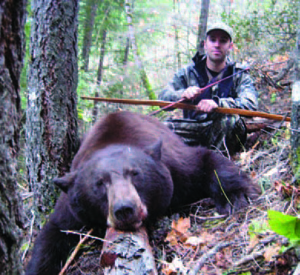
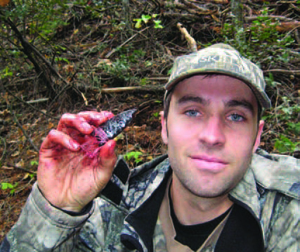
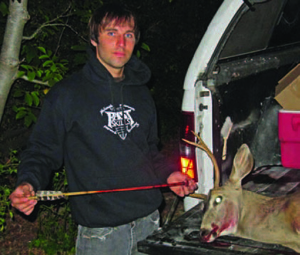
That was my first day as a true paleo hunter. It was many years ago, and needless to say, I did not shoot an elk that day. Nor did I shoot any animal for a good 2-3 years. It took countless days of practice: tracking , stalking, sitting , and shooting, before I would make my first kill. My equipment alone has hundreds of hours of work put in to it—bows are the culmination of many weeks of refined woodworking, and a single arrow made of earthen material can take upwards of 2-3 days to complete. And when it’s all said and done, I head out on to the landscape, like my ancestors before me, with a quiver full of weaponry that most people in the modern world would put behind glass or display on their mantel.
The thrill, excitement, and pride I take in harvesting my own food is immense and wholly incomparable to anything else. There is a spiritual connection that takes place in the depths of my soul when I am able to feed myself not from aisles of a supermarket, but from the plentiful earth herself. The meat on my grill was once a living, breathing creature. I know this not because I am told it is so, but because I was there. I have that moment, etched in to my memory forever, when I felt the wind on my face, the sun on my skin, and my senses stretched out in to the open space around me in a deep meditation of awareness. I can still see that animal moving gracefully in front of me as we carry out that timeless dance between hunter and prey that has been played out time-and-time-again for over 100,000 years.
I do not expect that everyone has the time to learn the art of bow-making and flintknapping, or the opportunity to spend hours on end in the woods tracking their prey. However, just as in our box here at CrossFit West Santa Cruz, I hold you to a higher standard. You’ve dedicated yourselves to a level of fitness or performance that is well above average—your diet should be no different. If you’re not eating paleo, than you need to seriously examine why you are even training so hard. If you are eating paleo already, then go kill something. Just once. Kill what you eat. Your diet already necessitates the taking of life, so I am wholly unwilling to have a debate with you on the morality of hunting. Have the courage to do it yourself at least once in your life and make that connection within you to your paleo ancestors. It will, forever, change the way you look at nutrition… and the world
Paleo life first appears in the Americas between 15,000-20,000 years ago. The specifics of the paleoindian migration are still the subject of ongoing research; however, most archeological evidence points to a migration over what is now the Bering Strait, down through modern-day Alaska, and spreading south and east to populate both the continents of North and South America. These people represent what many would describe as the epitome of fitness and the realization of the true potential of the human body. Paleoindians were the hunters of the megafauna: the giant beaver, steppe wisent, musk ox, mastodons, woolly mammoths, and ancient reindeer. Their diet in comparison to later indigenous peoples was high in these megafauna protein sources and supplemented by the foraging for wild edible plants, nuts, and seeds. Hunting and gathering bands usually had no chief and the men and women earned the respect of the group because of their abilities at hunting, healing, or providing some other needed service or physical ability to the band… Sounds suspiciously to me like the communities at many microgyms.


I have been fascinated by the paleo lifestyle for most of my existence. As a child, I used to run through the woods, attempting to fashion a spear out of just about any long pointed object I could find, and family camping trips usually ended with my parents on the verge of calling the search and rescue team to drag me out of the forest. As I got older, I decided to actively attack this passion, and throughout my teenage and college years, I became a voracious student of primitive wilderness survival skills. I attended countless outdoor schools, workshops, and poured over every written anthropological record I could find that described the tools, methods, and lifestyles of the first Americans. I’ve always been a hands-on learner, so it was never enough for me just to read about something either. I was “in it”, down on my hands and knees in the woods reading tracks, carving bow-drill kits to make fire by friction, brain-tanning animal hides, and banging rocks together in the hopes of making an arrowhead. While all the primitive skills interested me, it was always the hunting skills that peaked my interest above all else. After years of practice, honing my skills, and perfecting my tools, I was ready to put my skills in to action—to hunt as our ancestors did, tens-of-thousands of years ago:
I’m deep in the woods of Montana. The drive just to get to the edge of this property was over 5 hours from the nearest town, and by now I’ve hiked many miles from the last road. The land I’m told, is an original homesteader plot – 500,000 acres of untouched wilderness with several of its own elk herds. My spiritual preparation began days ago: fasting, praying, and partaking in the sweatlodge ceremony. I’m fully committed to hunting in the old ways.
It’s an eerily misty morning as the sun begins to rise. I can’t see more than 20 yards in to a meadow that I know is almost a quarter of a mile long. As I come up out of a mossy ravine, under the cover of the juniper boughs, I can hear the mystical sound of the bull elk’s bugle call. The primordial scream echoes off the hillsides causing my pulse to quicken and my palms to sweat. In my hands, I clutch on to nothing but sticks and rocks. A hand-carved wooden bow, made from an Osage Orange tree, and a small Dogwood arrow shaft tipped with a chipped flint point, and fletched with wild turkey feathers. I look out to the field, squinting, trying to focus on something that I still cannot see… when, all of a sudden… CRASH! The thunderous sound of antler-on-antler almost knocks me over backwards as two satellite bulls explode towards me engaged in a battle of dominance. Saplings fall to the wayside like cardboard models in a Godzilla movie and the ground shakes each time the bulls engage. I look down at the 2-inch stone point lashed to my arrow, and then back at the 1000 pound bulls and think to myself “no fucking way”.
Then, as quickly as they appeared, the beasts are gone. Bugle calls go off all around us and the herd is on the move. My partner, who is my hunting mentor and best friend (as well as the author of the opening paragraph to this piece), looks back at me and signals that it’s time for the chase. I’ve learned everything I know about hunting from him, and as I far as I know, we are two of the only people still hunting big game in this sacred manner. We sprint through the field, staying low to the ground and following the shadows. Through another ravine, jumping across a small creek and scaling the side of a flood wash with the aid of tree roots and small rocky handholds. Moving through a boulder field, my legs start to burn; it’s like a 2 hour long session of squats… while running… through snow covered fields… trying to be completely silent and invisible. I can’t help but think how clumsy my movement must be in comparison to my paleo counterparts. But that is why I train, that is why live and eat the way I do, to continue on these ancient traditions, and keep that small slice of human history alive.



That was my first day as a true paleo hunter. It was many years ago, and needless to say, I did not shoot an elk that day. Nor did I shoot any animal for a good 2-3 years. It took countless days of practice: tracking , stalking, sitting , and shooting, before I would make my first kill. My equipment alone has hundreds of hours of work put in to it—bows are the culmination of many weeks of refined woodworking, and a single arrow made of earthen material can take upwards of 2-3 days to complete. And when it’s all said and done, I head out on to the landscape, like my ancestors before me, with a quiver full of weaponry that most people in the modern world would put behind glass or display on their mantel.
The thrill, excitement, and pride I take in harvesting my own food is immense and wholly incomparable to anything else. There is a spiritual connection that takes place in the depths of my soul when I am able to feed myself not from aisles of a supermarket, but from the plentiful earth herself. The meat on my grill was once a living, breathing creature. I know this not because I am told it is so, but because I was there. I have that moment, etched in to my memory forever, when I felt the wind on my face, the sun on my skin, and my senses stretched out in to the open space around me in a deep meditation of awareness. I can still see that animal moving gracefully in front of me as we carry out that timeless dance between hunter and prey that has been played out time-and-time-again for over 100,000 years.
I do not expect that everyone has the time to learn the art of bow-making and flintknapping, or the opportunity to spend hours on end in the woods tracking their prey. However, just as in our box here at CrossFit West Santa Cruz, I hold you to a higher standard. You’ve dedicated yourselves to a level of fitness or performance that is well above average—your diet should be no different. If you’re not eating paleo, than you need to seriously examine why you are even training so hard. If you are eating paleo already, then go kill something. Just once. Kill what you eat. Your diet already necessitates the taking of life, so I am wholly unwilling to have a debate with you on the morality of hunting. Have the courage to do it yourself at least once in your life and make that connection within you to your paleo ancestors. It will, forever, change the way you look at nutrition… and the world
| Cliff Hodges is the co-owner of CrossFit West Santa Cruz as well as the founder and of owner of Adventure Out, an outdoor school and guide service in Northern California. Cliff teaches classes in survival skills and primitive technology to hundreds of students every year throughout the state. In 2007, he hunted and killed a record-book 450 lb. Black Bear, all with traditional native-style, hand-made equipment. According to the Fish and Game warden that validated the kill, it is the first bear killed with a handmade wooden bow and stone-point arrow in over 100 years. |
Search Articles
Article Categories
Sort by Author
Sort by Issue & Date
Article Categories
Sort by Author
Sort by Issue & Date

